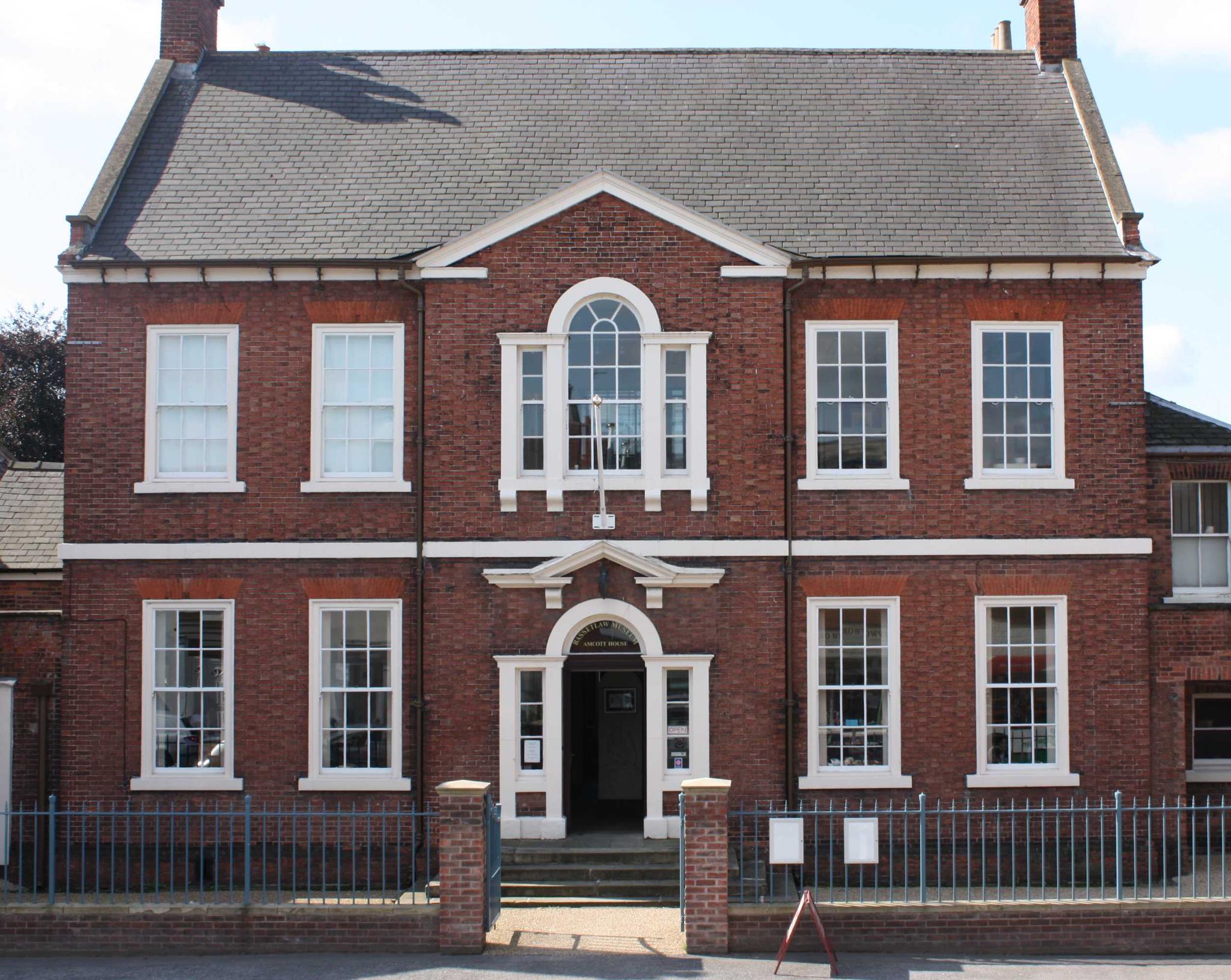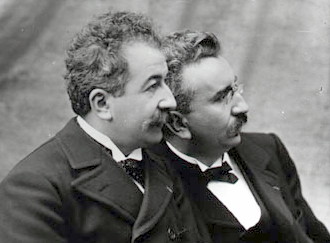|
Bassetlaw Museum
The Bassetlaw Museum is a museum in Retford, Nottinghamshire which documents the history of North Nottinghamshire from the earliest times to the present day. It is situated on Grove Street, Retford. History The Bassetlaw Museum was created in 1983 and has a number of collections donated by people in the local area. The collections include local history, archaeology, decorative and fine art, agriculture, costume and textiles. The museum is situated in the 18th century Grade II* listed Amcott House on Grove Street, Retford where it moved in 1986. Admission to the museum is free. Collection highlights * Art gallery - built in 1994 and partly financed by the Percy Laws Memorial Fund of the Rotary Club of Retford. * Photography - comprising the 21,000 negatives known as the Welchman Collection, which were taken by professional photographers Edgar Welchman and Son of Grove Street, Retford between 1910 and 1960. The photograph collection at the Museum also contains over 25,000 photogr ... [...More Info...] [...Related Items...] OR: [Wikipedia] [Google] [Baidu] |
Stephen Pegler
Stephen Pegler (1852–1937) was the son of the founder of the Northern Rubber Company, Alfred Pegler. He was an industrialist and pioneer in the rubber industry, as well as a photographer. His early colour photographs (autochromes) are now kept in the Bassetlaw Museum in Retford, Nottinghamshire and are said to be the largest collection of Autochromes in the UK by one photographer. Personal life Stephen Francis Pegler (1852-1937) was born in Bowdon, Cheshire, the son of Alfred Pegler, the founder of the Northern Rubber Company, and his wife Elizabeth Selina Pegler (nee Partridge). He had an older sister Josephine, and a younger brother Francis (Frank). In the 1861 census, Stephen was 8 years old and living with his father and mother, grandmother Susannah Oatavis Pegler 72, sister and brother in London, where his father was a foreign merchant. In the 1881 Census, he was 27 and living in Retford. He and his brother were working in the family business. In 1899 the brothers set up P ... [...More Info...] [...Related Items...] OR: [Wikipedia] [Google] [Baidu] |
Retford
Retford (), also known as East Retford, is a market town in the Bassetlaw District in Nottinghamshire, England, and one of the oldest English market towns having been granted its first charter in 1105. It lies on the River Idle and the Chesterfield Canal passes through its centre. Retford is east of Sheffield, west of Lincoln, Lincolnshire, Lincoln and north-east of Nottingham. The population at the 2011 census was 22,013. In 1878 an Act of Parliament extended the borough of East Retford to include the village of Ordsall, Nottinghamshire, Ordsall, West Retford and part of the parish of Clarborough. It is administered by Bassetlaw District Council, which itself is now a non-constituent partner member of the Sheffield City Region Combined Authority. In addition to being an ancient market town and infamous Rotten Borough, Retford is known as being at the centre of Nonconformism, with the origins of the Pilgrims, Baptists and Wesleys being in this area. History Origins of the n ... [...More Info...] [...Related Items...] OR: [Wikipedia] [Google] [Baidu] |
Nottinghamshire
Nottinghamshire (; abbreviated Notts.) is a landlocked county in the East Midlands region of England, bordering South Yorkshire to the north-west, Lincolnshire to the east, Leicestershire to the south, and Derbyshire to the west. The traditional county town is Nottingham, though the county council is based at County Hall in West Bridgford in the borough of Rushcliffe, at a site facing Nottingham over the River Trent. The districts of Nottinghamshire are Ashfield, Bassetlaw, Broxtowe, Gedling, Mansfield, Newark and Sherwood, and Rushcliffe. The City of Nottingham was administratively part of Nottinghamshire between 1974 and 1998, but is now a unitary authority, remaining part of Nottinghamshire for ceremonial purposes. The county saw a minor change in its coverage as Finningley was moved from the county into South Yorkshire and is part of the City of Doncaster. This is also where the now-closed Doncaster Sheffield Airport is located (formerly Robin Hood Airport). In 20 ... [...More Info...] [...Related Items...] OR: [Wikipedia] [Google] [Baidu] |
Bassetlaw Museum
The Bassetlaw Museum is a museum in Retford, Nottinghamshire which documents the history of North Nottinghamshire from the earliest times to the present day. It is situated on Grove Street, Retford. History The Bassetlaw Museum was created in 1983 and has a number of collections donated by people in the local area. The collections include local history, archaeology, decorative and fine art, agriculture, costume and textiles. The museum is situated in the 18th century Grade II* listed Amcott House on Grove Street, Retford where it moved in 1986. Admission to the museum is free. Collection highlights * Art gallery - built in 1994 and partly financed by the Percy Laws Memorial Fund of the Rotary Club of Retford. * Photography - comprising the 21,000 negatives known as the Welchman Collection, which were taken by professional photographers Edgar Welchman and Son of Grove Street, Retford between 1910 and 1960. The photograph collection at the Museum also contains over 25,000 photogr ... [...More Info...] [...Related Items...] OR: [Wikipedia] [Google] [Baidu] |
Carlton-in-Lindrick Knight
The Carlton-in-Lindrick knight is a small (6 cm tall) bronze figurine from the twelfth century, depicting a mounted knight armed for combat. It is an important find because period depictions of mounted European knights are relatively rare. Discovery and Acquisition The figurine was discovered by use of a metal detector in 2004 in Bassetlaw, Nottinghamshire. It is currently in the Bassetlaw Museum in Retford. The figurine was sought by collections outside Britain, but the Art Fund and other funds joined with the Bassetlaw Museum to acquire it for local display. Depiction The figurine depicts a mounted knight of the twelfth century, apparently armed for combat, as he is holding his shield and is in full armour. Characteristic of knights of the period, he wears a surcoat and very complete chainmail. Despite these typically 12th century characteristics, his helmet is conical and he carries a kite shield, both reminiscent of depictions of Norman knights in the Bayeux Ta ... [...More Info...] [...Related Items...] OR: [Wikipedia] [Google] [Baidu] |
Autochrome Lumière
The Autochrome Lumière was an early color photography process patented in 1903 by the Lumière brothers in France and first marketed in 1907. Autochrome was an additive color "mosaic screen plate" process. It was the principal color photography process in use before the advent of subtractive color film in the mid-1930s. Prior to the Lumière brothers, Louis Ducos du Hauron utilized the separation technique to create colour images on paper with screen plates, producing natural colours through superimposition, which would become the foundation of all commercial colour photography. Descendants of photographer Antoine Lumière, inventors Louis and Auguste Lumière utilized Du Hauron's (1869) technique, which had already been improved upon by other inventors such as John Joly (1894) and James William McDonough (1896), making it possible to print photographic images in colour. One of the most broadly used forms of colour photography in the early twentieth century, autochrome was re ... [...More Info...] [...Related Items...] OR: [Wikipedia] [Google] [Baidu] |
Wampanoag
The Wampanoag , also rendered Wôpanâak, are an Indigenous people of the Northeastern Woodlands based in southeastern Massachusetts and historically parts of eastern Rhode Island,Salwen, "Indians of Southern New England and Long Island," p. 171. Their territory included the islands of Martha's Vineyard and Nantucket. Today there are two federally recognized Wampanoag tribes: * Mashpee Wampanoag Tribe * Wampanoag Tribe of Gay Head (Aquinnah). The Wampanoag language was a dialect of Masschusett, a Southern New England Algonquian language. At the time of their first contact with the English in the 17th century, they were a large confederation of at least 24 recorded tribes. Their population numbered in the thousands; 3,000 Wampanoag lived on Martha's Vineyard alone. From 1615 to 1619, the Wampanoag suffered an epidemic, long suspected to be smallpox. Modern research, however, has suggested that it may have been leptospirosis, a bacterial infection that can develop into Weil ... [...More Info...] [...Related Items...] OR: [Wikipedia] [Google] [Baidu] |
Museums Established In 1983
A museum ( ; plural museums or, rarely, musea) is a building or institution that cares for and displays a collection of artifacts and other objects of artistic, cultural, historical, or scientific importance. Many public museums make these items available for public viewing through exhibits that may be permanent or temporary. The largest museums are located in major cities throughout the world, while thousands of local museums exist in smaller cities, towns, and rural areas. Museums have varying aims, ranging from the conservation and documentation of their collection, serving researchers and specialists, to catering to the general public. The goal of serving researchers is not only scientific, but intended to serve the general public. There are many types of museums, including art museums, natural history museums, science museums, war museums, and children's museums. According to the International Council of Museums (ICOM), there are more than 55,000 museums in 202 countrie ... [...More Info...] [...Related Items...] OR: [Wikipedia] [Google] [Baidu] |





